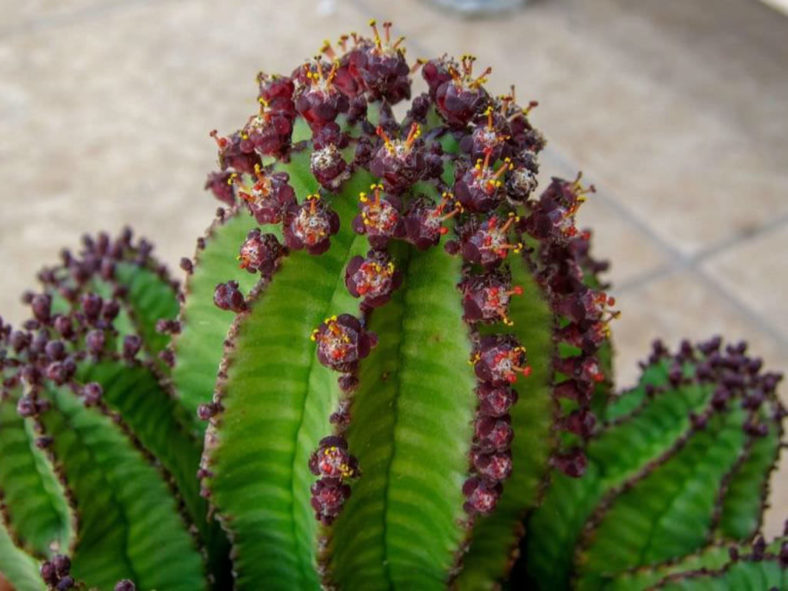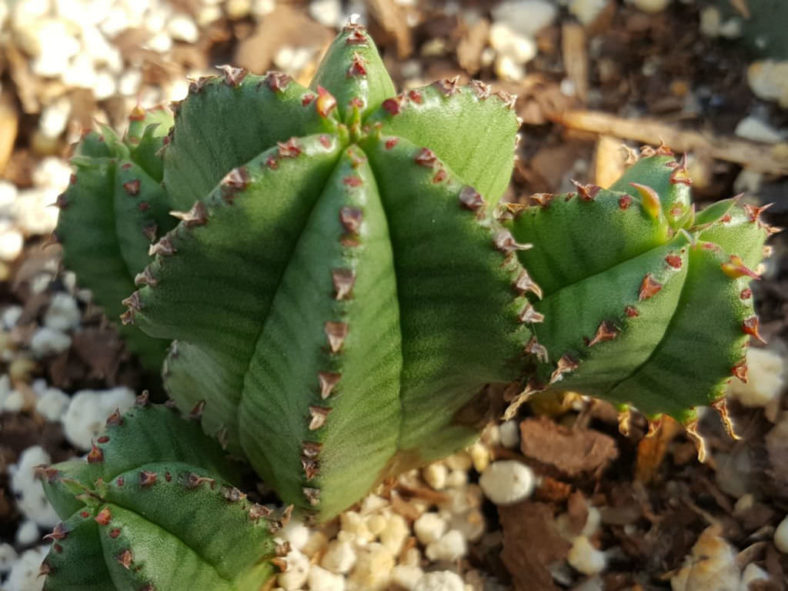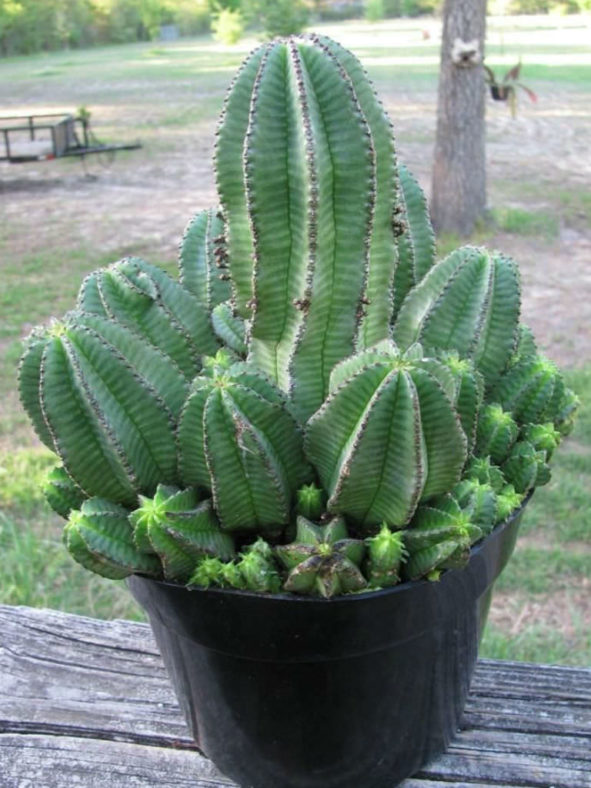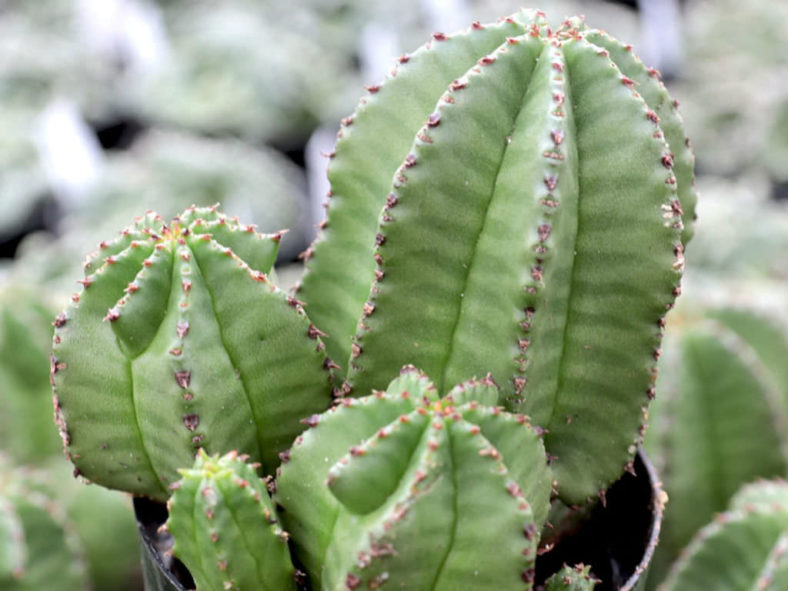Scientific Name
Euphorbia polygona var. anoplia (Stapf) D.H.Schnabel
Common Name(s)
Tanzanian Zipper Plant
Synonym(s)
Euphorbia anoplia
Scientific Classification
Family: Euphorbiaceae
Subfamily: Euphorbioideae
Tribe: Euphorbieae
Subtribe: Euphorbiinae
Genus: Euphorbia
Origin
Euphorbia polygona var. anoplia is native to South Africa. It is not accepted as a s separate variety and is treated as a synonym of Euphorbia polygona.
Description
Euphorbia polygona var. anoplia, also known as Euphorbia anoplia, is a small, clumping succulent that resembles a spineless cactus. It can grow up to 1 foot (30 cm) tall, forming a colony of leafless, ribbed stems that are usually somewhat variegated from whitish-green to green.
The small, dark burgundy flowers appear at the stem tips in spring.

How to Grow and Care for Euphorbia polygona var. anoplia
Hardiness: USDA hardiness zones 9b to 11b: from 25°F (-3.9°C) to 50°F (10°C).
Euphorbias are very easy to care for. These plants require a little pampering to become established, but once they are, they are self-sufficient. More die from too much care and watering than from neglect. Euphorbias need well-draining soil and lots of sunlight. They are not particular about soil pH, but cannot tolerate wet soil. Unlike most succulents, Euphorbia does not handle long periods of drought well. It may need weekly watering during the summer. Water whenever the soil is dry several inches below the surface. Water deeply, but don't let them sit in wet soil, which can cause root rot. Add some organic matter or fertilizer to the planting hole. Feed with a half-strength fertilizer monthly if you are growing them in containers or your soil is poor.
These succulents can be grown from seed, but the seeds can be difficult to germinate or even find. They are usually propagated by cuttings. This can be tricky because of the exuding sap. Rooting hormone is recommended with Euphorbia. They tend to grow problem-free, but there are a few pests and diseases to be alert for.
Learn more at How to Grow and Care for Euphorbia.
Links
- Back to genus Euphorbia
- Succupedia: Browse succulents by Scientific Name, Common Name, Genus, Family, USDA Hardiness Zone, Origin, or cacti by Genus
Photo Gallery
Click on a photo to see a larger version.


